Cortina
I’ve been in Europe for a month, base jumping and climbing, a trip partly inspired by an invitation to the Cortina inCroda climbing festival in Italy.
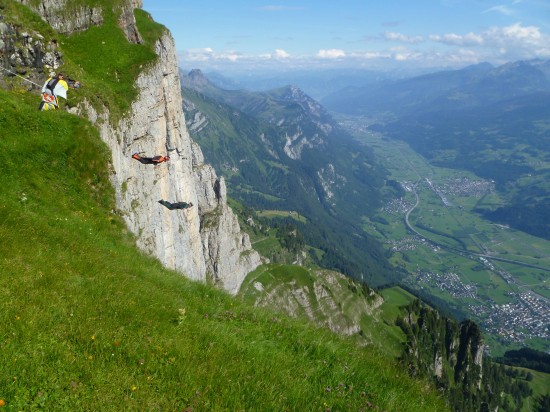
We started in Switzerland, jumping in Lauterbrunnen, Kandersteg Valley and Walenstadt and then moved over to Chamonix (where we saw Mont Blanc for about two minutes in a four day period)….with hopes for better weather, we set off for Cortina.
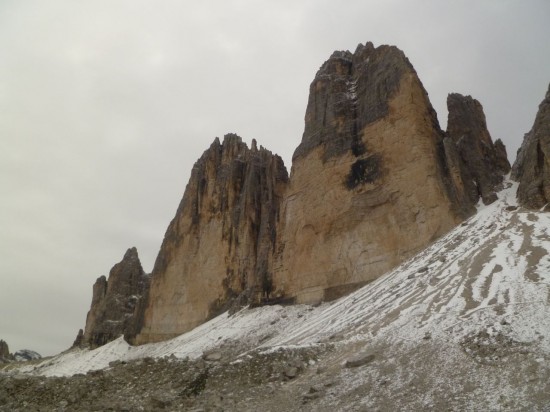
I climbed in the Tre Cime di Lavaredo several years ago, and had a lot of thoughts about going back there to jump and climb, which was why I leaped at the opportunity to spend a week in Cortina for the festival. July is supposed to be the best possible month to find good weather and temperatures on the big north faces of the towers, so showing up in the last week of July seemed like a winning plan. In the car from Chamonix, I paged through the climbing guidebook, getting excited for the week to come. I was sure I was hallucinating when the huge Cime came into view looking like a winter wonderland.
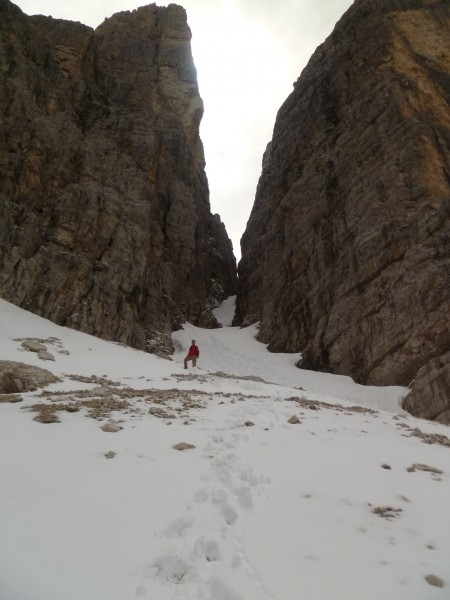
We walked all around them, marveling at the water and ice falling from the top and the snow filling the huge gullies. Full alpine conditions….in July!
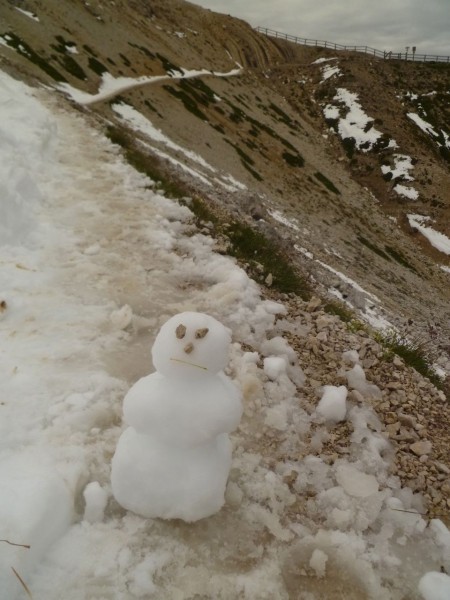
The Cime were out.
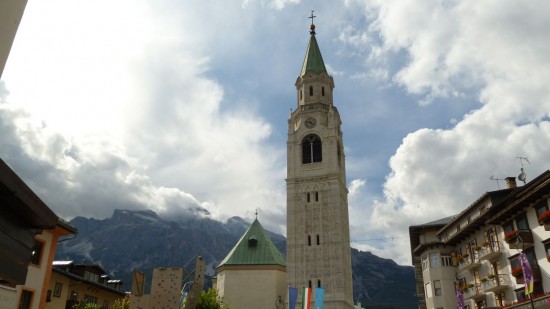
But that turned out to be a good thing, because Cortina is a major region of the Dolomites and perhaps the historical center of climbing there and I’d never seen any of it before, having almost never left the Tre Cime the last time I was there. Mario Lacedelli is the nephew of Lino Lacedelli, the first person to summit K2. Mario followed in his footsteps, with many major expeditions including his own ascent of K2, and is the organizer of the Cortina inCroda festival. Mario Lacedelli (not to be confused with my trip partner Mario Richard!) really wanted to make a special video for the festival, and had been planning on filming us climbing and jumping in the Cime.
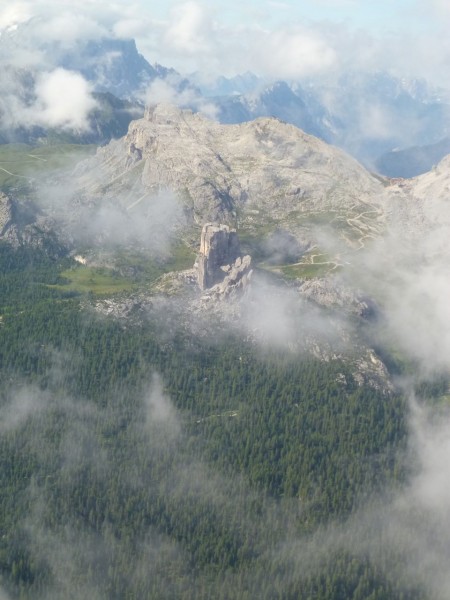
The unusual amount of snow in the mountains was making it impossible for us to do anything on the higher peaks, so he asked his friends Massimo and Natasha da Pozza to take us climbing at the Cinque Torri.
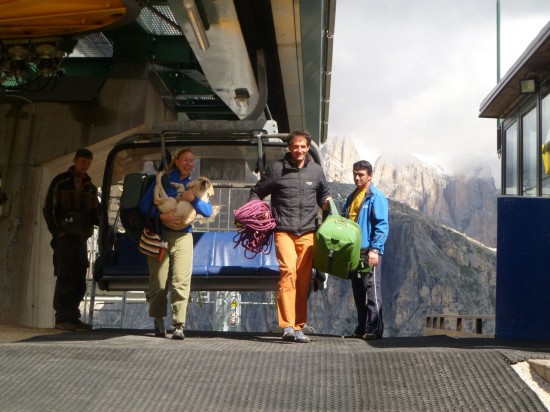
The Cinque Torri is a group of dolomitic limestone towers, much smaller than your average dolomite, which sits high above the town of Cortina. They were the original training ground of the Gruppo Scoiattoli, the first generation of Cortina climbers (one of whom was Lino Lacedlli). These climbers were so integral to the history and identity of the town, that their trademark squirrel (scoiattoli) became the symbol of the entire city. So Mario (Lacedelli) suggested that Mario (Richard) and I should consider climbing the tallest of the Cinque Torri and jumping it.
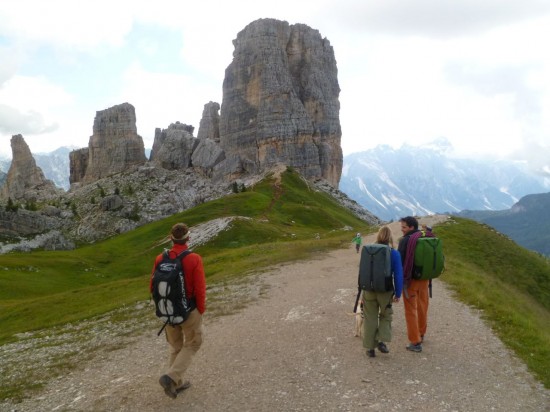
The biggest torri looked pretty small, and in fact it’s about 400 feet tall. In Moab that is a more than decent height for a jump–but the whole reason we came to Europe was to fly wingsuits off the big cliffs! Still, Mario (Lacedelli) really wanted us to jump something special in honor of the festival and Cortina, Mario (Richard) is up for anything involving a new jump, and I really wanted to go climbing, so we went out for a look with Massimo and Natasha.
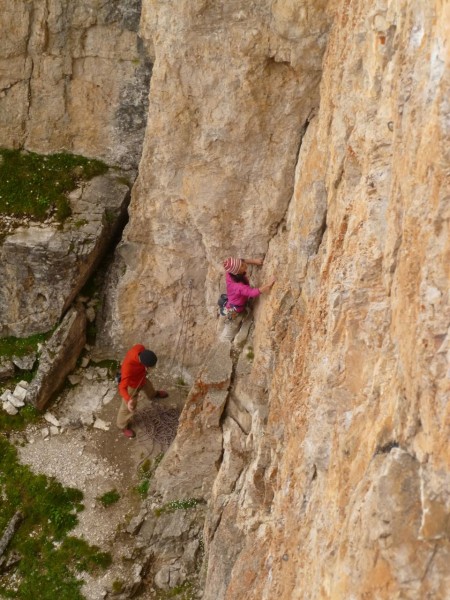
The climbing was great fun on dolomitic limestone, for two pitches.
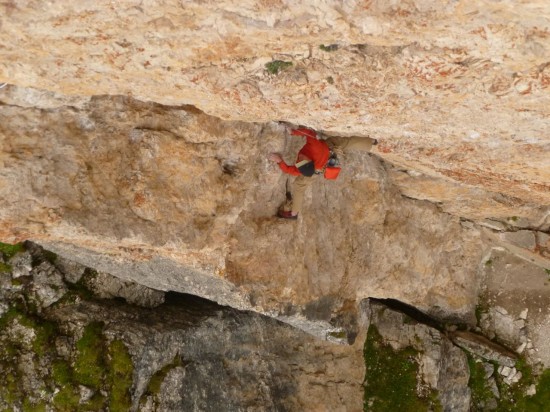
Until a heavy rainstorm motivated us to rap.
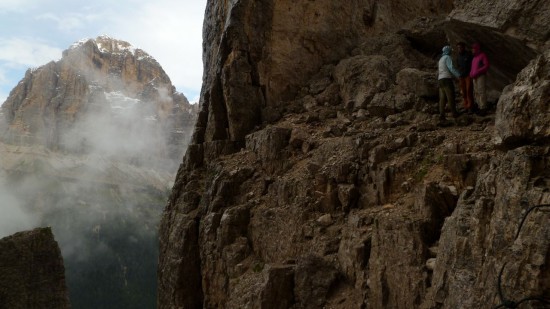
So the Cinque Torri was a wash, and there was only one more day to the festival.
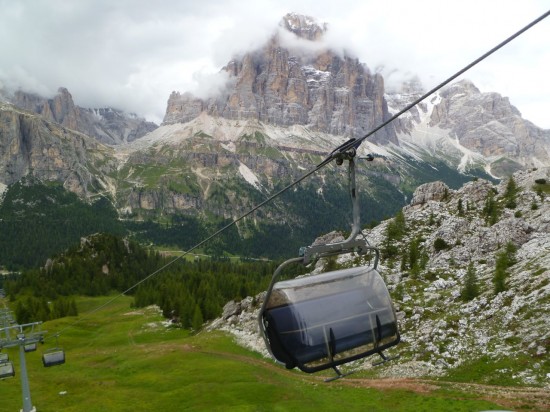
On the way down the chairlift (you get to ride chairlifts to the climbing areas in Europe!) Massimo showed us the giant Tofana de Rozes, also coated in snow, and pointed out the pillar on the right side, called the Pilastro.
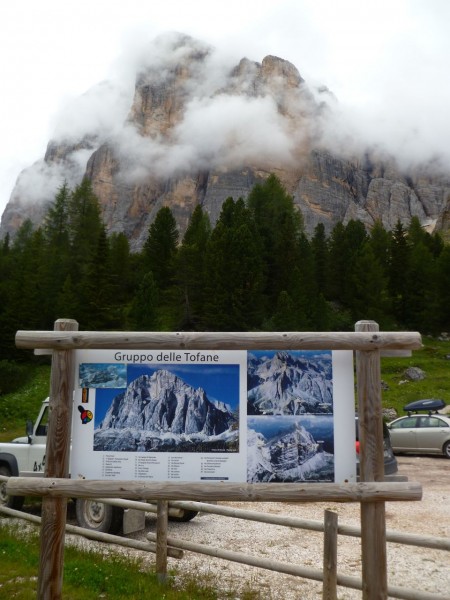
The Pilastro is also heavy in historical significance for Cortina and climbing, and Massimo himself, perhaps Cortina’s best climber, had put up a modern route up it. He told us that the pillar was steep and sheer, and we could see the telltale yellowish limestone on the upper half. He disappeared with his cell phone for a while and then came back and said, “Mario wants to know if you would jump the Pilastro, if we got a helicopter to take you there?”
Mario (Richard) and I looked at each other, wondering if anything had gotten lost in translation…..
“Let me think….yes!”
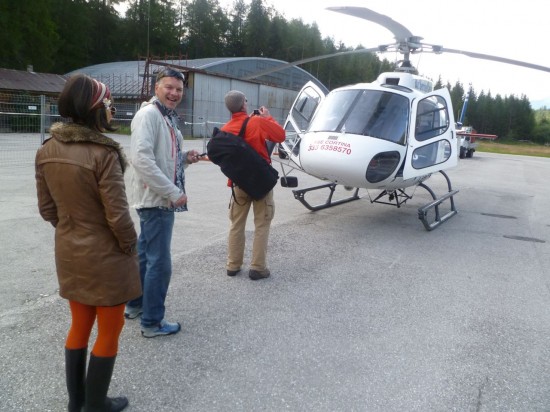
The Cortina inCroda festival instantly became my favorite climbing festival of all time. 🙂
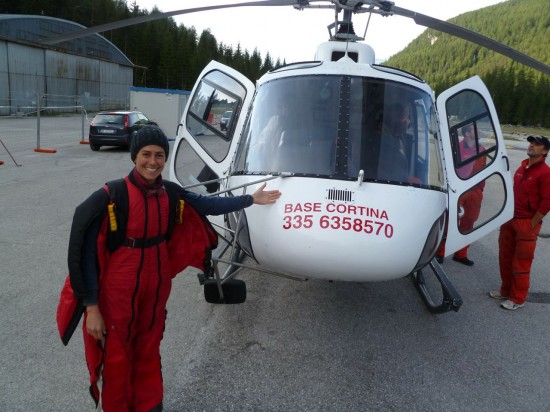
The next morning, Mario (Lacedelli) and his girlfriend Zelda took us just a few minutes out of town to the helicopter. I was starting to understand that he REALLY wanted us to do a special jump for this festival. And you don’t summit 8000m peaks without plenty of determination.
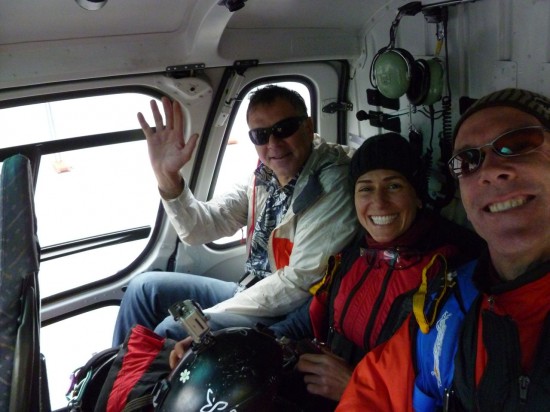
No one had ever jumped the Pilastro, but it was about 1000 feet tall, and Massimo was sure it would be a good jump for us.
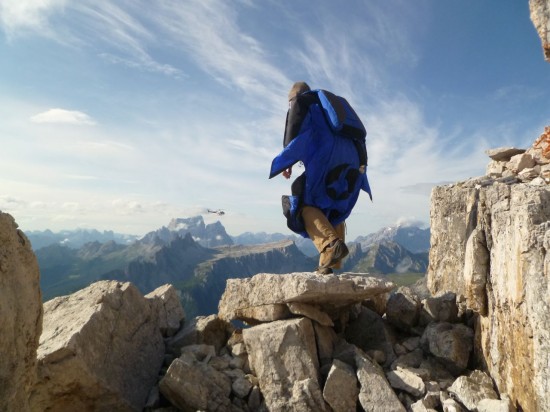
The helicopter pilot flew almost directly into the rock face just below the summit, giving us a huge thrill and causing Zelda to vow never to ride in a helicopter again, and then dropped us on top and hovered around for a few minutes, until it became obvious that Mario and I would need some time to find a suitable place to exit the cliff. It wasn’t perfectly flat and undercut, and we needed to make sure we had a clean section of rock below us before leaping off, so we scrambled around for a while until we found a spot that we thought was safe.
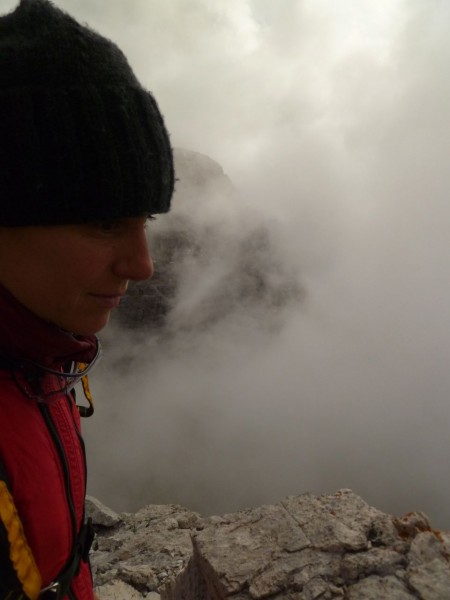
By then the clouds had started to roll in, as with almost every other jump we’d done in these stormy few weeks in the mountains.
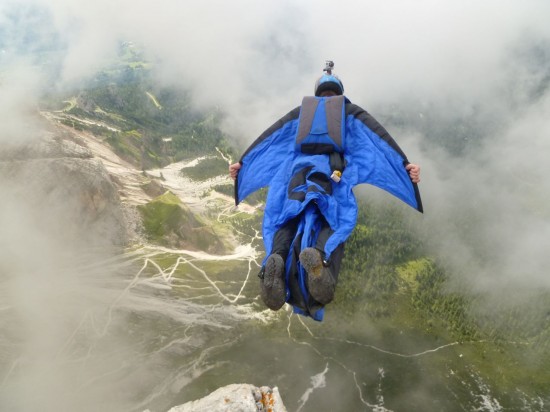
We waited for the clouds to open a bit, and then off we went, flying down to the climber’s hut, the Rifugio Dibona where Alessandro, the video maker for the Cortina inCroda festival was waiting there for us, anxious to download all of our helmet footage…. Success at last 😉 This I can tell you: Mario Lacedelli will not be denied, and especially not in Cortina d’Ampezzo!
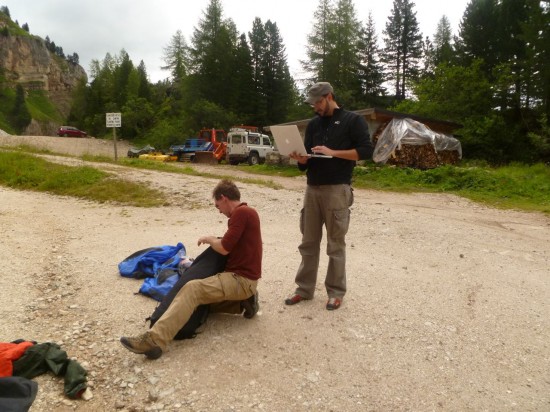
The festival was a fantastic event, Alessandro’s video of the Pilastro jump had a great reception and even made the regional newspaper, and we left Cortina deeply impressed with the hospitality, and sheer determination, of the Cortina climbers!
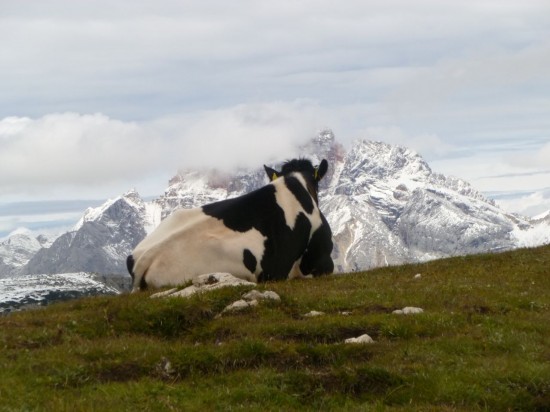








How old were you when you started climbing, steph?
I was 18 🙂
One of the coolest things I did while in the Dolomites a few years ago was climb the Tofana de Rozes all the way from town on the summer solstice. When I got to the top I was greeted by two grizzled old Italians who refused to let me head back down without helping them finish their bottle of wine.
Hope you’re well, Steph.
Those Italians won’t let you leave without lots of drinking! 😀
I was 18.
Hi Steph.
I saw that you visited many places in Italy, but that you wasn’t so lucky with the weather…global climate changes, I suppose…
Maybe you’ll come back to try it again?
I live in Reggio Emilia, and unfortunately we don’t have so many places around to do something of exciting as you do usually, but we have a very special one.
Have you ever heard about “Pietra di Bismantova”? It is an isolated flat mountain with steep walls, ideal also for BASE jumping.
I send you some photographs, so you can take a look, and some link.
http://www.bismantova.tk/
http://www.bbviviana.it/dove_siamo.htm
You can climb it almost all over the year, if you want, because we don’t have a lot of snow even in winter.
Let me know if you are interested.
All the local climbers would be excited to know you and to share with you our “magic stone”! Of course you would be our guest!
Have a nice day and and a thrilling new Year!!!
Good luck for every single moment of your unique life…and thank you to let us know it just a little bit.
Thank you Glauco!! I always come back to Italy, because I love it! The weather was not perfect, but we still jumped a lot and loved it, as always 🙂 Thanks for the photos and the invitation!!! What is the best season in Reggio?
Hello
Steph,
I agree
with you, I love Italy
too and not only because it is my motherland.
There are
so many different and beautiful things scattered in a little area, compared to
that of USA,
that made it something special.
Anyway, I
must admit that Moab
desert has something that we are missing: the silence in which you can be alone
without feeling alone, the sound of the earth from which we came and where
we’ll come back…but not now!!! We have a lot of things to do before…
For example,
about the best season to come to Reggio, I think that for a climber is from May
to September. I would warn you that in July and August there could be 35-40°C in the afternoon, so from
1 to 5 it is better to rest. Or fly with a parachute…
However, in
my opinion the best period is in the early June. There are a lot of hours of
sunlight and it is not so hot.
Thanks for
your kindly reply, and take care of yourself!!!
P.S.
But not too
much…how can we get by without your videos?!?
thank you! I really hope to visit Reggio some time.